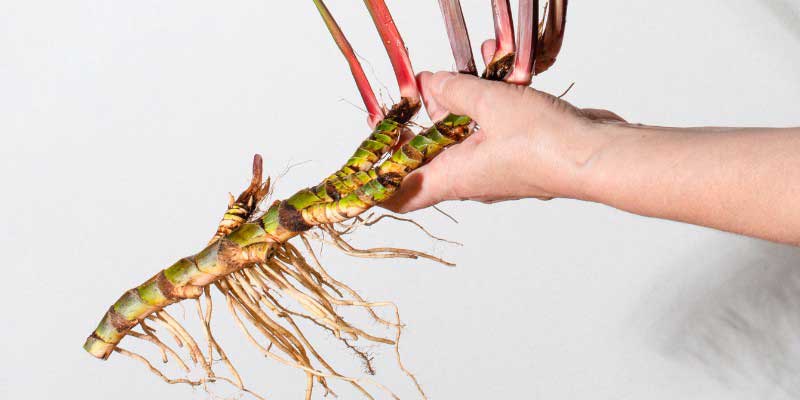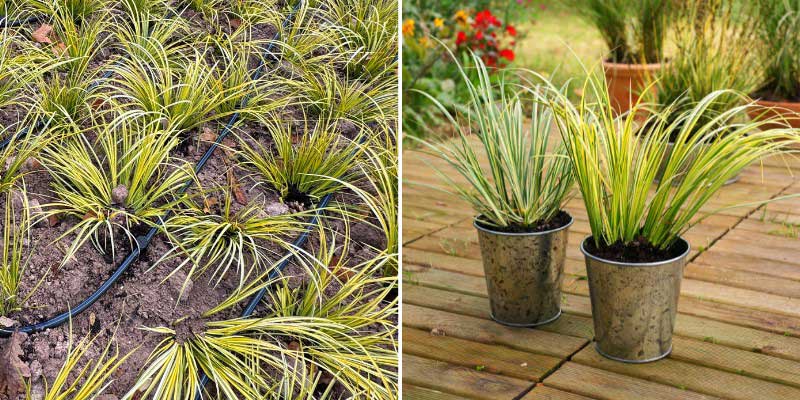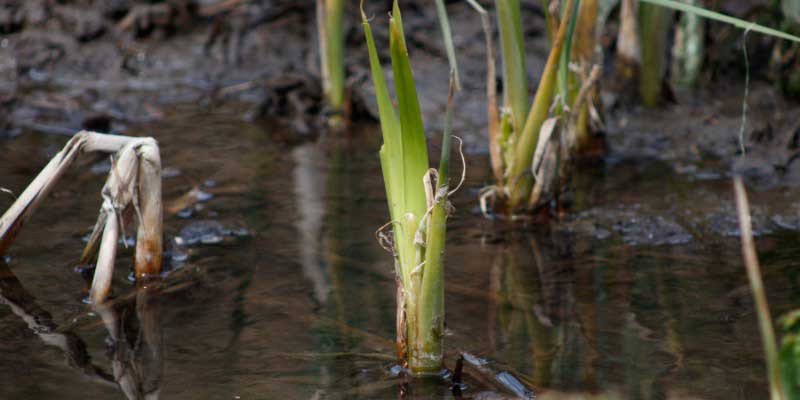The Acorus, also known as Sweet Flag or Japanese Rush, is a perennial plant prized for its highly graphic linear foliage, perfect for planting along water edges. There are different species, such as Acorus calamus, which thrives with its roots in water (submerged under 15-20 cm of water at most), and Acorus gramineus, ideal for planting on banks or in waterlogged beds. Some varieties are beautifully variegated, like Acorus gramineus 'Ogon' or Acorus calamus 'Variegatus'. Acorus is perfect for pond borders, rain gardens, or marshy areas, adding aesthetic appeal while helping to stabilise damp soils.
Propagating Acorus not only allows you to obtain new young plants at no extra cost but also rejuvenates existing clumps, promoting more vigorous growth. Discover all our tips on when and how to divide Acorus clumps!
Explore our complete guide on Acorus and its cultivation
Why propagate Acorus?
Propagating Acorus allows you to:
- Densify existing plantings, expand beds, or create new ones: Division lets you obtain new young plants from an existing rootstock, ideal for extending ground cover or sharing with fellow gardening enthusiasts.
- Rejuvenate clumps: Over time, the centre of Acorus clumps can become sparse. Regular division revitalises the plant and encourages dense, healthy growth.
- Give more space to established plants: If they grow in submerged baskets, pots, or confined beds, dividing clumps will aerate the space, giving them more room.
- Reproduce a specific variety: If you have a variegated variety, for example, dividing it will give you new young plants with identical characteristics to install in a new location.

When to divide Acorus rootstocks?
The best time to divide Acorus is in early spring (March-April), before active growth resumes. Temperatures are moderate then, reducing stress on the plant, and new divisions will have time to establish roots before winter. It can also be done in autumn, after flowering and as temperatures begin to drop, but before the first frosts.
How to divide Acorus rootstocks?
Acorus forms rootstocks (underground stems growing horizontally), allowing the plant to spread gradually. It produces new shoots emerging from these rootstocks. Dividing them is therefore quite straightforward to obtain new young plants.
Required tools
Here’s what you’ll need to successfully divide the rootstocks:
- A spade or garden fork: to dig up the plant without damaging the roots.
- Sharp secateurs or a knife: to cleanly cut the rootstocks.
- A basin of water: to moisten the roots if needed.
- Wellington boots: if the Acorus is submerged in a pond or marshy bed.
- Rich, moist substrate: for example, a mix of garden soil, compost, and potting soil to replant the divisions.
- Pots (facultative): if you prefer to pot the young plants rather than plant them directly in the ground.
How to divide Acorus?
Follow these steps:
- If the plant is in a bed or pot rather than a pond, water it generously the day before to ease extraction and reduce root stress.
- Insert a spade around the base of the Acorus, digging wide enough to avoid damaging the roots and rootstocks, then gently lift the rootball.
- Remove excess soil from the rootball. This will help you clearly see the rootstocks to divide.
- Trim any dead or damaged parts and lightly prune the foliage if needed to reduce evaporation.
- Identify sections of rootstock with multiple roots. Each division should include at least one well-formed piece of rootstock.
- Use disinfected secateurs or a sharp knife to separate the rootstock sections. Make clean cuts without crushing the tissue.

- Replant immediately the young divisions in partial shade, along pond edges, in beds, or in pots. Bury the rootstocks at the same depth as before.
- If the soil is dry or you’re potting, water generously after planting to ensure good root-to-soil contact.
- Keep the soil moist for the first few weeks.

How to care for Acorus after dividing?
After division, it’s essential to keep the soil moist but not waterlogged to encourage rooting of the young plants. Regular watering prevents drying out while avoiding rootstock rot. For potted or bedded plants, adding organic mulch (dead leaves, straw) helps retain moisture and protects the roots.
A light application of mature compost or organic fertiliser in spring will boost recovery and promote Acorus growth. Monitor the foliage: yellowing or wilting may indicate water stress or poor drainage.
In colder regions, protect young plants from frost with thicker mulch or, if potted, move them to shelter until spring. Once well-rooted, they can be transplanted permanently into the ground.

































Comments